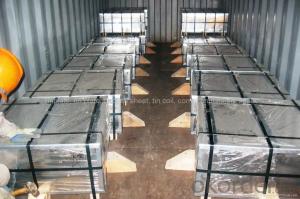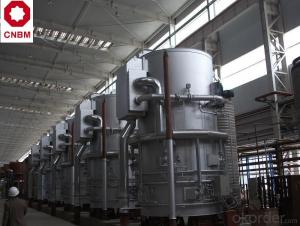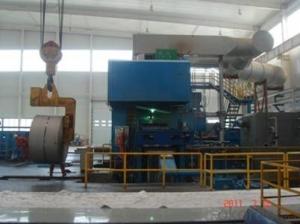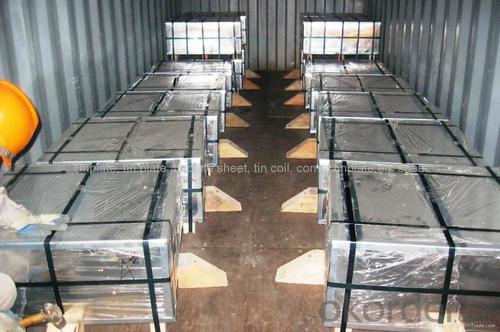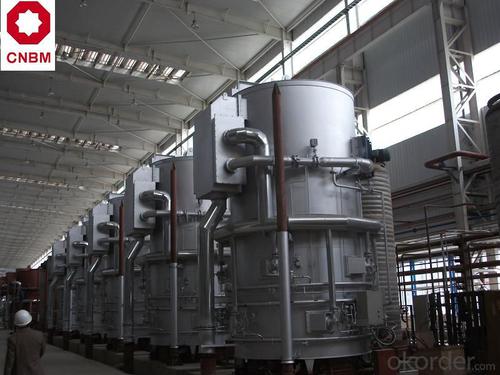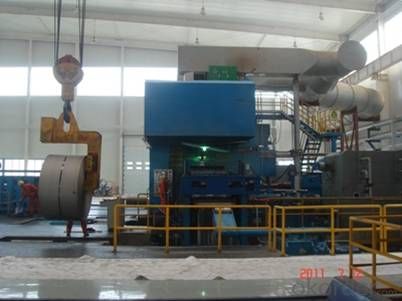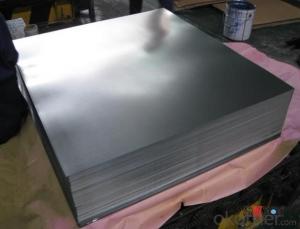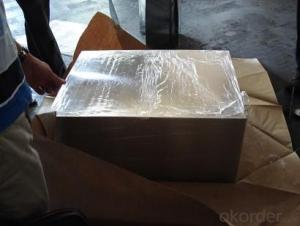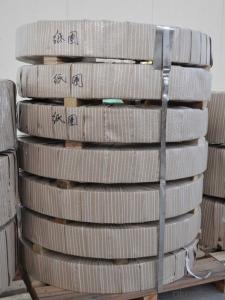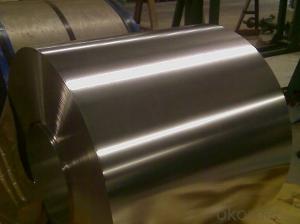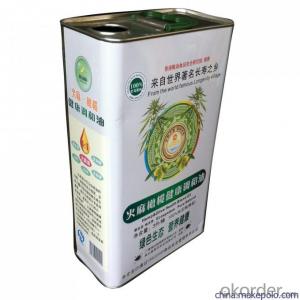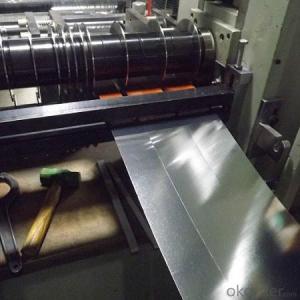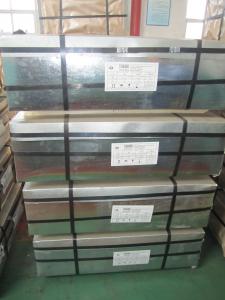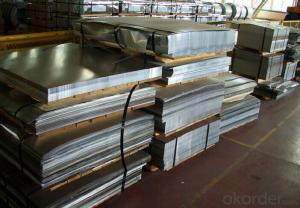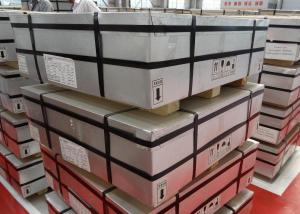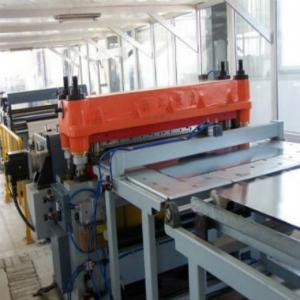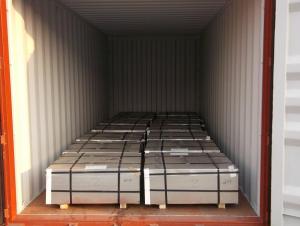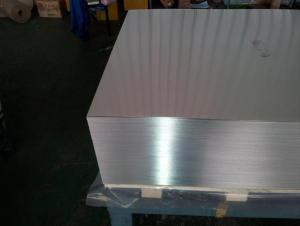Electrical Tinplate Manufacture, High Quality For Food Cans & Industrial Cans
- Loading Port:
- Tianjin
- Payment Terms:
- TT or LC
- Min Order Qty:
- 25 m.t.
- Supply Capability:
- 40000 m.t./month
OKorder Service Pledge
OKorder Financial Service
You Might Also Like
Specification
1.Brief Introduction
Tinplate is widely used for making all types of containers, containing industrial usage such as paint can, oil can, aerosol cans etc., and food cans like milk powder cans, tomato paste can, dry food cans etc.
2. Quality
As a state owned company and a large tinplate supplier in China, our tinplate quality ranks 1st level in China, similar to Bao Steel, Posco etc.
3. Specification
Standard | GB/T2520, JIS G3303, DIN EN10202 |
Material | MR /SPCC |
Thickness available | 0.16-0.50MM |
Width available | 600~1050MM |
Temper grade | T1 – DR8 |
Tin coating | ordinary 2.8g/2.8g, 5.6g/5.6g and others |
Package | sea worthy export package |
Applications | Tin can for chemicals & paint cans, industrial cans, food cans |
4. Our production steps
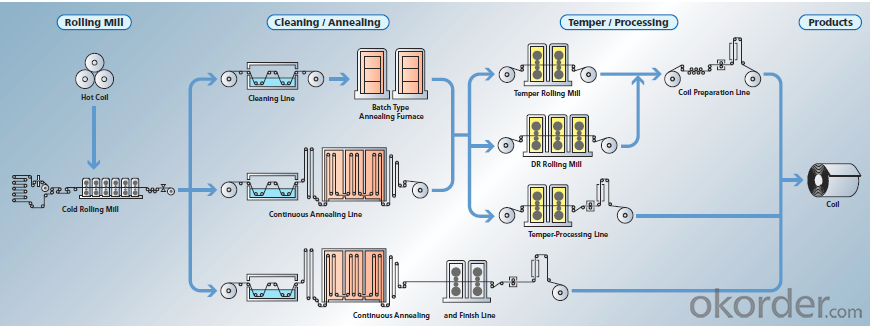
5. Usage Scope
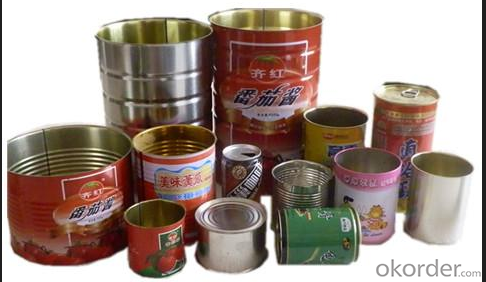
6. Our euxport market
our tinplate has been popularly exported to more than 30 countries, including Asia, Europe countries, Gulf area, Sounth America, Northe & South Afric etc.
7. FAQ
a. What’s the price difference between SPCC & MR?
Our MR is about usd 15~20/mt higher than SPCC; b. What’s the difference between SPCC & MR
They have difference element content, MR is better than SPCC in anti-rust and deep drawing.
Steel | C | Si | Mn | P | S | Cu | Others |
MR | ≤0.09 | ≤0.03 | ≤0.35 | ≤0.02 | ≤0.025 | ≤0.1 | ≤0.35 |
SPCC | ≤0.12 | ≤0.5 | ≤0.035 | ≤0.025 |
c. What production standards you accept?
We could accept production standards upon our customer request, such as JISG 3303, DIN EN10202, GB/T2520 etc. Our tinplate could meet these standards.
d. If we want to place order, is there any requirement about the booking time?
We need to purchase raw material in advance. Around date 20 per month our production plan will be finalized. So it’s better if customer could place order before date 20 per month, otherwise the delivery time will delay one month.
- Q: What are some common tinplate products?
- Some common tinplate products include food cans, beverage cans, aerosol cans, cookie tins, and decorative tin boxes.
- Q: What are the different ways to label tinplate packaging?
- There are several ways to label tinplate packaging, including using adhesive labels, direct printing on the surface, embossing or debossing the tinplate, or using lithography to transfer a design onto the packaging.
- Q: How does tinplate contribute to the durability of construction materials?
- Tinplate contributes to the durability of construction materials by providing a protective coating that helps prevent corrosion and rusting. This coating acts as a barrier against moisture and other environmental factors, extending the lifespan of the construction materials. Additionally, tinplate enhances the strength and structural integrity of the materials, making them more resistant to wear and tear.
- Q: What are the main applications of tinplate in the agricultural industry?
- Tinplate is commonly used in the agricultural industry for its various applications such as packaging and storage of agricultural products, manufacturing of containers for fertilizers and pesticides, as well as for agricultural machinery components due to its corrosion-resistant properties.
- Q: How does tinplate contribute to the overall tamper-evident packaging?
- Tinplate contributes to the overall tamper-evident packaging by providing a durable, secure, and easily detectable seal. Its strength and rigidity make it difficult to tamper with without leaving visible signs of manipulation. Additionally, tinplate can be easily molded into various shapes and sizes, allowing for customized packaging designs that enhance tamper resistance.
- Q: Tin plated tin plated?
- Because of the punching after the incision site no tin layer, while most parts of surface layer of tin, the pretreatment process of adverse, removing tin layer will damage the substrate without removing the tin layer if not plating parts difficult to achieve uniform effect
- Q: Tin can bake oven electrical electromagnetic induction principle
- First of all, you know that mechanical energy such as sound can not be transmitted in a vacuum, but it can propagate electromagnetic waves. Heating iron cans, iron cans emit electromagnetic waves, infrared, and the like. The bottle is left vacant or left vacant, and it will be affected by energy, fever, deformation and so on.
- Q: What is the purpose of coating tinplate?
- The purpose of coating tinplate is to provide a protective barrier against corrosion and to enhance the appearance of the metal surface.
- Q: Tin, tin plated iron. Why can't we get white wine?
- Passivation of the tinplate, if further coating, will be very good corrosion resistance, but these coatings are not resistant to alcohol.In short, tinplate is afraid of water, but also afraid of alcohol, so it can not be loaded white wine.
- Q: How does tinplate packaging contribute to product aesthetics?
- Tinplate packaging contributes to product aesthetics by providing a visually appealing and attractive presentation. The shiny and smooth surface of tinplate enhances the overall look of the packaging, giving it a premium and high-quality feel. Additionally, tinplate allows for intricate designs, embossing, and printing techniques, allowing brands to create eye-catching graphics and logos that further enhance the visual appeal of the product.
Send your message to us
Electrical Tinplate Manufacture, High Quality For Food Cans & Industrial Cans
- Loading Port:
- Tianjin
- Payment Terms:
- TT or LC
- Min Order Qty:
- 25 m.t.
- Supply Capability:
- 40000 m.t./month
OKorder Service Pledge
OKorder Financial Service
Similar products
Hot products
Hot Searches
Related keywords
